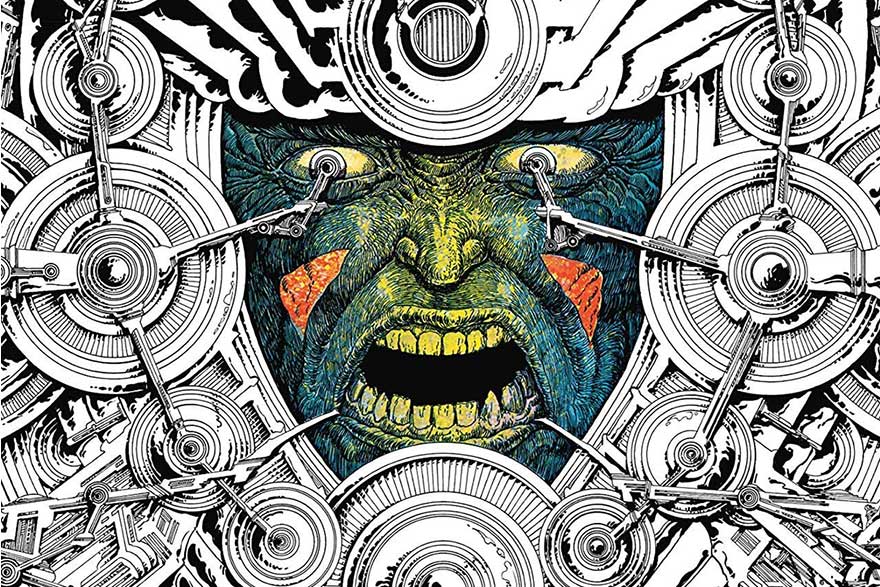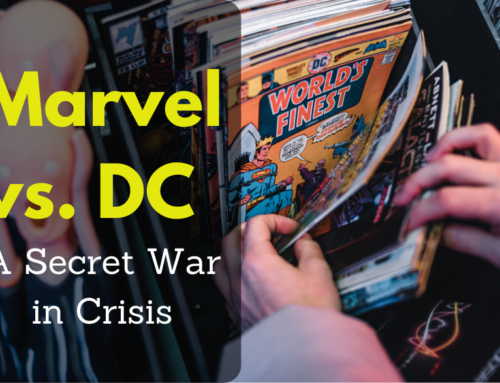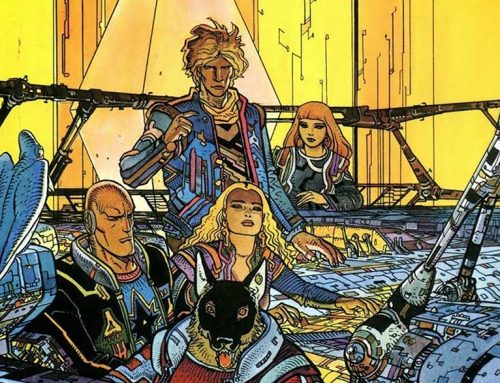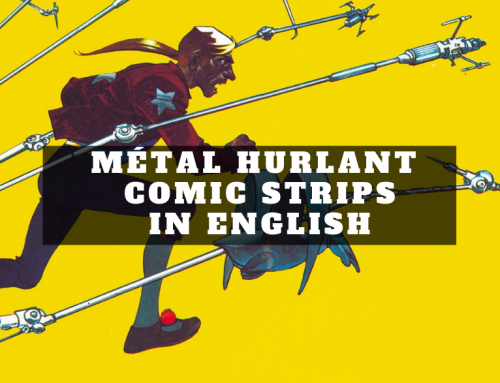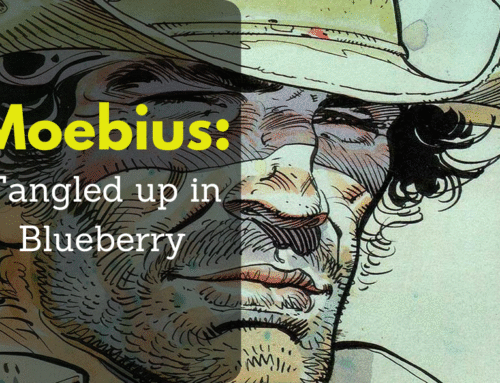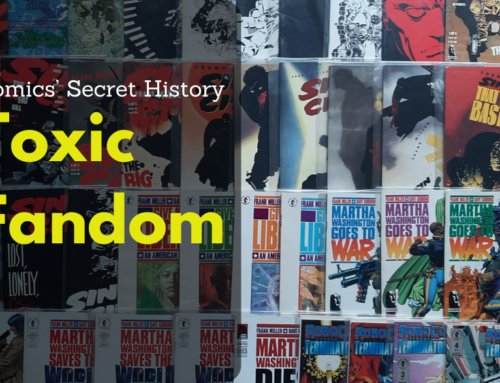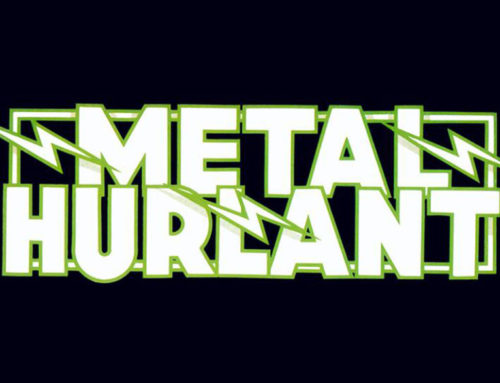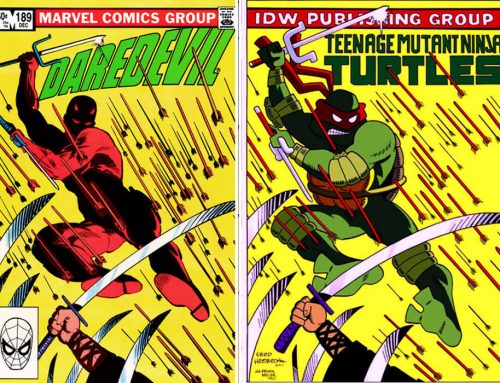English language graphic novels by Metal Hurlant co-founder and baroque universe builder Phillipe Druillet have been out of print for years. Thankfully, veteran British graphic novel publishers Titan Books have come to the rescue. Their Druillet Library reissues look great: large format hardback volumes printed on good quality paper just like proper bandes dessineés albums ought to, but without the need for a Duolingo French binge. If only the Moebius estate would let them do something similar with The Airtight Garage.
Many of the titles feature Druillet's enduring antihero, Lone Sloane, who I've described elsewhere as a 'sort of a demented mashup of Han Solo and a sweary Silver Surfer'. I stand by that description.
Any prices displayed are in US dollars, although the links will take you to your local Amazon store where they'll be priced in your local currency. As an Amazon affiliate, I may earn a small commission for any purchases made via this article, but it won't affect the price you pay and it'll earn you my gratitude and a healthy karma offset.
The 6 Voyages of Lone Sloane
This collection of early Lone Sloane adventures was first published in 1972 and featured stories that originally appeared in the French weekly anthology comic, Pilote (home of Asterix, Valerian and Blueberry). As the title suggests, it contains six loosely-connected, self-contained yarns – Les Future Shocks, if you will. Despite being early work that first appeared in a comic targeted at an adolescent audience, the art is pure Druillet and the stories are delightfully bonkers.
A great introduction.
Lone Sloan: Delirius Vol. 1
Written by Snowpiercer co-creator Jacques Lob and originally serialised in Pilote, this was the first album-sized Lone Sloan epic. Our red-eyed antihero finds himself on the mad planet Delirius ("The debauched Planet of a Hundred Thousand Pleasures"), caught between the ruthless ambitions of the evil Imperator Shaan and a rebellious order of gangster monks called the Red Redemption. Presumably their ancestors were heavily involved in Western-themed videogame franchises.
Dark, epic and mind-bogglingly imaginative. A classic.
Lone Sloan: Gail
A broken Sloane finds himself trapped on a prison planet at the mercy of evil aliens 'made of metal and hate.' Their ruler, Merennen, wants to usurp power from Sloane's archenemy, the Imperator Shaan, while dark, otherworldly forces manipulate both sides.
This was the first Metal Hurlant-era Lone Sloane adventure, and Druillet embraces his increased artistic freedom with gusto. The story deals with big ideas and the artwork delivers them in breathtaking style, yet it still feels deeply personal. While the opening pages were produced in 1974 and serialised in early issues of Metal Hurlant, the story was completed in 1978 after the death of his wife, Nicole, and photographs of her are incorporated into the artwork. The grief-induced rage that fuelled The Night (1976) now contains a glimmer of hope. As he writes in his 1981 introduction "Let the darkness be nothing but the chiaroscuro which highlights the beauty of things."
Lone Sloane: Salammbo
In 1862, Gustave Flaubert followed up Madam Bovary – his classic study of literary infidelity – with a big, blood-splattered historical epic in which a violent mercenary becomes obsessed with a beautiful priestess and lots of people die. In 1980, Druillet relocated the story from ancient Carthage to his own psychedelic sci-fi playground, ditched the book's male lead and replaced him with Lone Sloane. Just as well literary Twitter wasn't a thing back in 1980 (or, for that matter, 1862).
Side note: Druillet's adaption of Salammbô was, in turn, adapted into a 2004 point-and-click PC adventure game. Druillet was heavily involved in the game's creation, but it hasn't aged brilliantly. This was no Resident Evil 4 and his comic is much better.
- Flaubert, Gustave
- Druillet, Phillipe
- Druillet, Phillipe
The Night
Written just a year after the death of his wife, Nicole, The Night (La Nuit) is one of the most personal, harrowing comics ever created. It tells the tale of a drug-addicted, post-apocalyptic biker gang on a doomed quest for the ultimate high. A sense of suffocating nihilism and frustrated rage permeate the story, with dialogue so terse it makes Frank Miller comics sound positively verbose. Visually stunning, its depiction of murderous sci-fi bikers was a huge influence on the Mad Max series of films, especially the most recent Fury Road. It also features a bizarre Rolling Stones musical interlude, which is something you don't get enough of in comics these days.
A raw, powerful, unforgettable comic where an emotionally vulnerable creator uses art to process his grief. Essential reading.
Lone Sloan: Chaos
Lone Sloane is dead and his corpse is being transported by train to his old enemy, the tyrannical Imperator Shaan. Like most train journeys, though, don't go quite as scheduled – and, yes, we're talking about something a bit more cosmic than a rail replacement bus service to Delirius. The red-eyed inter-dimensional wanderer returns for a final (possibly, we'll see) head-to-head showdown with his arch-nemesis in a meditation on God, sex, life, death, art and good versus evil that's cleverly disguised as an epic space opera.
Yragael and Urm the Mad
Written by Michel Demuth and inspired by British author Michael Moorcock's Elric saga (more on that later), Yragaël and Urm the Mad features two separate but interconnected stories. The first opens with the birth of the universe (well, it worked for the Bible), before introducing us to Yragaël – prophet, prince, and the last hope of a doomed world, until he's seduced by the queen of an evil city, or possibly by an enticing embodiment of the place. To be honest, it's hard to tell. In the second tale, we meet their offspring, the grotesque fool Urm, who probably got off to a bad start by having an evil city as a parent. It's all very confusing, but the art sure does look purty.
Lone Sloan: Delirius Vol. 2
When his best friend's daughter is kidnapped, Lone Sloane is forced to make a return trip to 'The Planet of a Hundred Thousand Pleasures', Delirius. The 2012 sequel to his 1972 classic took a long time getting to the printers. The original Delirius creative team of Jacques Lob and Druillet started work on a sequel as far back as 1987, but, sadly, Lob passed away in 1990, and the project was mothballed. Druillet returned to the project in 2011, collaborating with writer Benjamin Legrand (who, as it happens, previously continued the Snowpiercer series after Lob's death). Possibly due to its staggered production, the artwork seems a tad uneven by Druillet's standards, although the story itself is a lot more straightforward and linear than some of his more esoteric works.
- Lob, Jacques
- Druillet, Philippe
- Legrand, Benjamin

Elric : The Return to Melnibone
Michael Moorcock's albino warrior Elric returns to Melnibone only to discover that his evil cousin had been scheming against him. This edition contains two black-and-white Elric strips: a 20-page story by Moorcock and Druillet and another illustrated by long-term Moorcock collaborator Jim Cawthorn. The Druillet story originally appeared in 1973 and had been in and out of print over the years due to copyright issues that were outlined (in amusing detail) by Moorcock on his forum. You'll need to scroll down a bit, but it's well worth a read.
- Moorcock, Michael
- Cawthorne, James
- Druillet, Phillippe

Vuzz
Black and white fantasy strip in two parts, originally published in the French magazines Phénix (1973) and Metal Hurlant (1982). A change in tone for Druillet, this tale of a grotesque thief trying to get by in a world of giant rabbits, inept warriors, and pervy wizards swaps out his usual penchant for cosmic nihilism for something more akin to black humour. This is reflected in the art, which seems looser and more spontaneous.
One from Druillet's short-lived early, funny period.
Lone Sloane Box Set
Collecting the first three volumes from Titan's Druillet Library (6 Voyages of Lone Sloane, Delirius, and Gail) in a rather fetching slipcase.

